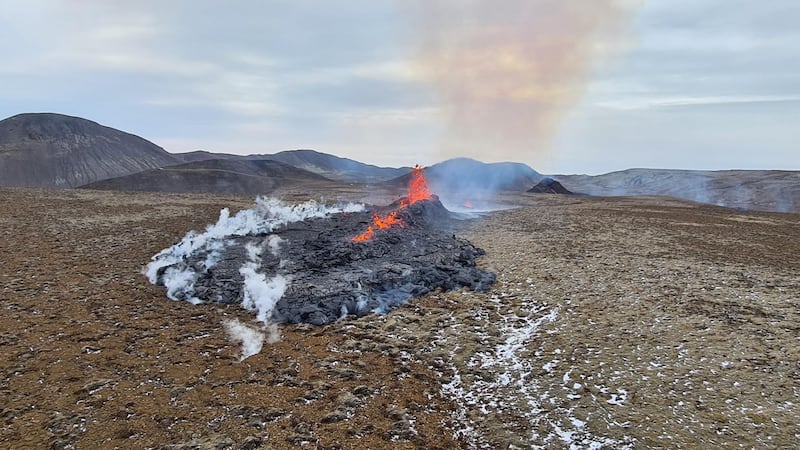Steam and lava have spurted from a new fissure at an Icelandic volcano that began erupting last month, prompting the evacuation of hundreds of hikers who had come to see the spectacle.
The new fissure, first spotted by a sightseeing helicopter, was about 500m long and about a kilometre from the original eruption site in the Geldinga Valley.
The Icelandic Department of Emergency Management announced an immediate evacuation of the area, but said there was no imminent danger to life due to the site’s distance from popular hiking paths.
The Icelandic Meteorological Office said the new volcanic activity was not expected to affect traffic at nearby Keflavik Airport.
The long-dormant volcano on the Reykjanes Peninsula in southwest Iceland flared to life on March 20th after tens of thousands of earthquakes were recorded in the area in the past three weeks.
It was the area’s first volcanic eruption in nearly 800 years.
The volcano’s proximity to Iceland’s capital, Reykjavik, about 32km away, has brought a steady stream of tourists to the area, even with the country in partial lockdown to combat coronavirus.

About 30,000 people have visited the area since the eruption began, according to the Icelandic Tourist Board.
Live footage from the area showed small spouts of lava coming from the new fissure.
Geophysicist Magnus Gudmundsson said the volcanic eruption could be moving north from its original location. "We now see less lava coming from the two original craters," he said. "This could be the beginning of a second stage."
Iceland, located above a volcanic hot spot in the North Atlantic, averages one volcanic eruption every four to five years.
The last one was at Holuhraun in 2014, when a fissure eruption spread lava the size of Manhattan over the interior highland region.
In 2010, ash from Iceland’s Eyjafjallajokull volcano shut down much international air travel for several days. – Associated Press









